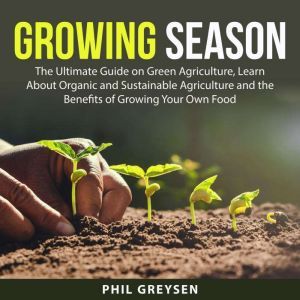
List: $4.99
| Sale: $3.50
Club: $2.49
Growing Season: The Ultimate Guide on Green Agriculture, Learn About Organic and Sustainable Agriculture and the Benefits of Growing Your Own Food
Author: Phil Greysen
Narrator: Todd Studder
Unabridged: 37 min
Format: Digital Audiobook Download
Publisher: Author's Republic
Published: 08/02/2021
Category: Gardening - Greenhouses
Synopsis
Growing Season: The Ultimate Guide on Green Agriculture, Learn About Organic and Sustainable Agriculture and the Benefits of Growing Your Own FoodRegrettably, your tasty burger and perfectly salted fries might be part of a bigger and much bigger damaging effect on the environment. It causes water pollution, air pollution, dead areas, and industrial food production consumes so much power. You've heard it time and again: purchase locally. Here's why: purchasing local cuts back on something known as "food miles," or how far your food has been transported. The berries you purchase at the market might have been air-freighted from Chile, which implies those yummy treats have a huge carbon footprint. On average, produce in the U.S. travels anyplace from 1,300 to 2,000 miles from the farm to the market. Organic farming aims to downplay environmental impact with techniques like crop rotation, compost, biological instead of chemical pest control, and green instead of synthetic fertilizers. If crops are rotated, there's no need for additives. This audiobook will discuss green agriculture and organic farming and going green. This audiobook will discuss the following topics:- What Does Going Green With Food Mean- What Is Sustainable Agriculture- What Is Organic Agriculture- The Difference Between “Natural” Foods And “Organic” Foods- The Benefits Of Growing Your Own Food- Planning An Environmentally Friendly Garden- Finding “Green” Farmers In Your Area- Final Tips- And many more!If you eat organic, don't simply picture the healthy food you're placing in your body, picture the sound ecosystems which raised that food, the workers who are safer from chemicals, the land, water, and air that's getting protected, and the wildlife that's being allowed to prosper. If you want to learn more, scroll up and click “add to cart” now!